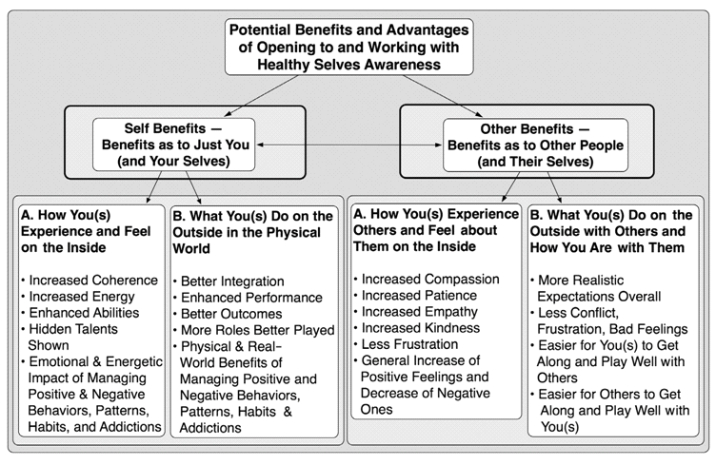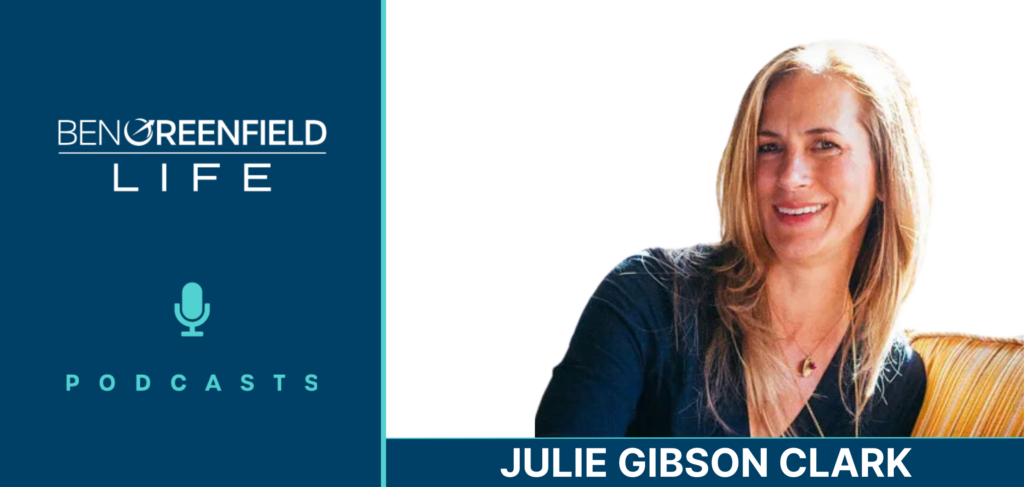February 23, 2021
What is behind the multiple successes of world-class athlete, ballet dancer, award-winning chef, and successful entrepreneur Herschel Walker, as well as behind the physiological improvements and other positive shifts in capacity experienced by eight 70-year-olds who spent a week in a specially tailored environment?
My friend Jim Fadiman, Ph.D. believes it's not supplements, hypnosis, diet, exercise, affirmations, or psychedelics. What it is will probably surprise you—but, more importantly, you’ll be able to use it and benefit from it right away because it’s built into who you are.
It is the concept of “healthy multiplicity,” which I discuss in my recent podcast with Jim, “Microdosing For Sports Performance, Microdosing Stacks With Psychedelics & Planet Medicines, The Best Microdosing Protocols & Much More.” (Yes, this podcast also goes into psychedelic microdosing, which he is widely known for.) Healthy multiplicity, or the “healthy selves worldview”—and its utility for performance, longevity, and overall health and energy—is the central premise of Your Symphony of Selves: Discover and Understand More of Who We Are, by Jim Fadiman and Jordan Gruber.
In today's article—a guest post by Jim and Jordan—you'll discover the main argument for healthy multiplicity, some historical context, the general benefits of adopting a healthy selves worldview (which is more closely attuned to the way things actually are), and finally how this all translates to performance, longevity, and emotional intelligence benefits.
What Healthy Multiplicity Is (And What It Isn't)
It is important to distinguish healthy multiplicity (which is what most people, especially high-functioning ones, experience) from pathological multiplicity (as in multiple personality disorder, or what the Diagnostic and Statistical Manual of Mental Disorders (DSM) now calls dissociative identity disorder).
If you’re thinking “Sybil,” “Split,” “Fight Club,” or “United States of Tara,” that’s pathological multiplicity. Instead, we have built healthy multiplicity from a positively oriented psychological framework around our observations and understanding of healthy selves from the bottom up.
The healthy selves worldview begins with the notion that all people, including the happiest and most successful, have different selves, parts, or subpersonalities. Learning to voluntarily and consciously shift in to and out of different parts of who you are—so that you are more often in the most appropriate self rather than being abruptly shifted or triggered into a dysfunctional self for the moment—is, as we will describe, tremendously beneficial.
It's precisely why one of our catchphrases is “Mental health is being in the right mind at the right time.”
A brief example of why Alcoholics Anonymous (AA) is well-known for being highly effective compared to most psychotherapy will help make clear how what we’re talking about can be so powerful. The success of the AA program is partly attributed to the beginning of its meetings, where everyone present takes their turn in saying, “My name is so-and-so, and I’m an alcoholic.” By doing this, they literally bring the part of them with the abuse problem into the room—to be seen, witnessed, comforted, and assisted by others with the same issue. If that same person sees a psychotherapist, the self with the abuse issue often doesn’t show up initially, and then often resists being present.
If you're thinking, “Oh no, not another self-help book,” we purposefully wrote Your Symphony of Selves so that it was not a self-help book—but rather, a guidebook or gazetteer to an interior landscape that is at once both very strange and very familiar.
As you read this article, consider our central premise—that everyone has different selves, subpersonalities, or parts, including the healthiest and most successful of people, and that therefore the assumption that we do or we ought to have only a single self is incorrect, distorting, and limiting—as a thought experiment (a Gedankenexperiment).
Einstein, Schrodinger, Leibniz, Newton, Descartes, and Galileo all used thought experiments (think of Schrodinger’s cat, or Einstein’s trains passing near the speed of light) and Galileo (whose ideas supported the notion that the Sun—not the Earth—was is center of the Universe) is particularly relevant here. This may seem like a grandiose claim, but placing the Earth at the center of the solar system is precisely on par with placing a single self at the center of every human being and just as incorrect. Seeing yourself as you are—as a constellation of selves that you move in and out of—provides substantial benefits in many areas of life.
If it’s true that all of us have different selves, then you would expect this idea to be found throughout popular culture and language—and indeed, it is. In our book, we provide extensive descriptions of artists, writers, and scientists musing on selves from a wide variety of fields. Experimenting with the healthy selves view costs you nothing, and marvelous—sometimes near-instantaneous—benefits and advantages can follow. (The first time you manage to shift away from a self that always lands you in the same argument with someone you care about, you’ll thank us.)
The Central Premise of Healthy Multiplicity
Selves—also called self-states—are recurring patterns of mind-body chemistry, perception, beliefs, intentions, and behaviors in human beings. We are all comprised of a set, or “constellation,” of these selves that we cycle through.
Depending on the moment, one of your selves will be up front, in charge, and “driving” your body.
Selves, themselves, are generally not visible or externally measurable scientifically, but the recurrent behavior of specific selves is observable and measurable, as are various philological correlates of specific selves, like body chemistry, brain scans, blood assays, and hormonal levels. In some cases, eyeglass prescriptions change between selves, and in one famous instance reported by psychologist Daniel Goleman, a man was highly allergic to orange juice in all of his selves but one, little Timmy, who loved OJ.
Different selves are truly different, and inherently valuable parts of who we are. Different selves have different abilities, different agendas, and perhaps even their own ultimate purpose. As you learn to acknowledge and respect your different selves, you learn to pull together for the good of the totality of who you are.
The better you learn to work with the entirety of your own personal constellation of selves, the more cohesive you will become overall, leading to increased congruence, coherence, and compassion—both for yourself (and your selves) and others and their selves.
 As you can see in the diagram above, there are many potential benefits and advantages of opening to and working with the healthy selves perspective. Note that half of the listed benefits refer to benefits for other people and their selves. We will shortly turn to benefits specifically related to performance, longevity, and health.
As you can see in the diagram above, there are many potential benefits and advantages of opening to and working with the healthy selves perspective. Note that half of the listed benefits refer to benefits for other people and their selves. We will shortly turn to benefits specifically related to performance, longevity, and health.
A Brief History of Healthy Multiplicity
We are not, by any means, the first to think, make observations, or write about multiple selves.
Interest in cases of pathological multiple selves goes back to the 16th century.
Colin Ross, M.D., notes that the transformation of identity has been recognized in nearly all cultures since prehistoric times. William James, the “Father of American psychology,” was quite clear that all people had different “social selves”—as many as the different places we spend time in interacting with different people.
This remained the general prevailing view until around 1910, when Sigmund Freud ruled out selves as part of his “rejecting the seduction hypothesis,” thereby driving all selves-related discourse into the realm of spiritual teachings (like those of Sri Aurobindo, G.I. Gurdjieff, and more recently, Jean Houston) and into psychotherapeutic and other systems oriented towards dealing with and healing pathological selves.
Psychosynthesis, founded in the first half of the 20th century, as well as Voice Dialogue and Internal Family Systems (IFS), developed in the latter half of the 20th century, are examples of these kinds of systems with well-articulated views and positions on multiple selves. Unfortunately, these psychological systems, which are generally limited to discussing therapeutic interventions and the healing trauma, haven’t yet managed to inaugurate a larger cultural discussion about the existence of healthy selves. That is, organizations like Voice Dialogue and IFS do tremendously good work, but don’t go far enough in questioning the assumption of a single self.
A more positive orientation towards the healthy selves worldview can be found in executive and life coaching, especially in Silicon Valley, where “parts work” has become very popular, mainly because, as in the above Alcoholics Anonymous example, it is so effective. The general idea that all of us have selves, that we can work with them to be more cohesive, and that there are many benefits to a wider non-pathological view of their origins is becoming much more widely recognized as we move deeper into the 21st century.
General Benefits of Healthy Multiplicity
Embracing the healthy selves worldview by consciously cultivating your own selves awareness and cohesiveness provides three large-picture or meta-level benefits that will impact every area of your life.
First, by recognizing that the idea that we are, or ought to be, a single self is flawed—we have never yet met anyone who is only a single self—many distortions fall away of their own accord.
The world we live in makes more sense and we automatically experience an enhanced ability to sync with ourselves (and our selves) and others (and their selves). One of the fundamental precepts of all programming (mental, emotional, physical, and computer) is GIGO, or garbage in, garbage out. By questioning the idea that multiplicity means mental illness, and by questioning the assumption of a single self, we take a lot of garbage out of the system.
Second, you will no longer be nearly as bothered by your own inconsistencies and the inconsistencies of others.
You can’t always meditate first thing in the morning because the part of you that has agreed to do so is not the part that awakens at 4:00 AM. And when you eat that thing you said you weren’t going to eat, or eat too late at night, the part of you that made the commitment isn’t up front right now. When you forget something someone told you, maybe it’s because the part of you that was told the information either wasn’t paying attention, or more likely, simply isn’t the part that’s up front right now. Understanding this, you’ll be able to give a lot more slack to everyone in your life—both you, as the constellation of selves who you are, and everyone else as well.
Third, as we will explore in the next section with reference to one of the highest-performing American athletes of all time, embracing the healthy selves perspective gives you an increased ability to access skills, talents, and creativity.
The creativity and abilities of high achievers in many fields are enhanced by their ability to seamlessly and effectively shift into and out of their different selves, whether or not they’re aware that’s what they are doing.
There are other general benefits as well.
These include being kinder to your self (and your selves), greater self (selves) acceptance and appreciation, increased physical and emotional energy generally (in part from not repressing or denying parts of who you are), increased physical healing and pain management abilities, increased ability to overcome bad habits and addictions, and better relationships.
So, how does having an awareness of selves bring these benefits?
We have experienced and observed that “awareness heals.” As you become aware that you have selves, they naturally enter into more frequent dialogue with each other, and you become more cohesive. One way this happens is by talking aloud to yourself. Talking aloud is often pointed to as a sign of mental illness—and indeed, there are people suffering from various conditions such as schizophrenia that make them talk aloud to themselves in uncontrolled disturbing ways—yet nearly all human begins do this, at least on occasion. Not only that, research shows that those who talk aloud to themselves in points of view other than the 1st person are better off and more effective than those who always use the word “I.” We think it’s likely that calling yourself by your own name or by “we” is so effective because it encourages awareness, dialogue, and cohesion between selves.
Healthy Multiplicity for Performance, Longevity, & Health Enhancement
Herschel Walker—often ranked among the greatest multi-sport athletes ever—was briefly the fastest human alive, won the Heisman Trophy as the best college football player, was a premier NFL running back for over a decade, won a bronze Olympic medal in the two-man bobsled, and had a brief mixed martial arts career with no losses. He also danced with the Fort Worth Ballet and won Season 3 of the “Rachael vs Guy: Celebrity Cook-Off” show.
Herschel also wrote a book about his experience with his own multiplicity. Throughout his book, Breaking Free, he gives direct examples of learning to access or create new selves, and he specifically states that the “alternative personalities” he created “did far more good than harm.”
For example, we learn that when he started running to lose weight in grade school, he had terrible knee pain and the doctor his mother took him to said he couldn’t run anymore. After his mom telling him he should go ahead and run anyway, he describes staying awake late at night developing the part of him called “the Erase,” which with enough conscious effort, could push through the pain. Herschel demonstrates great selves awareness throughout his book, mentioning his different parts like “the General,” “the Inner Coach,” and “the Warrior,” and astutely notes that “You don’t want Herschel Walker the football player babysitting your kids. Those are two different people.”
Regarding longevity, Ellen Langer’s reverse-aging study, described in Counterclockwise: Mindful Health and the Power of Possibility, took eight men in their 70s and plopped them into a rural environment that stimulated how things were for them in 1959, from a black-and-white small TV playing Ed Sullivan to the magazines and food items lying around. In just a week one week, all of the men showed significant improvements in physical strength, posture, gait, perception, memory, cognition, taste sensitivity, vision, hearing, and manual dexterity. We believe that being immersed in an environment that reminded them of their youth allowed these men to shift into younger and healthier selves, ones that were eager to cook meals for each other and even play touch football by the end.
Ben also discusses this study in his podcast “Age-Reversal Tips: You Can Be Younger (How To Use The Power Of Your Mind to Look & Feel 10 Years Younger).” with Marissa Peer and takes a deeper dive into how you can change your body and become physically and mentally at least ten years younger by harnessing the power of your subconscious mind.
 Jordan, age 60, has also experimented with returning to a younger self—the one he cultivated in his early twenties as he spent three years studying with a charismatic world-class Tae Kwon Do master (later U.S. Olympic Coach). For decades now, Jordan has found that as soon as he starts regularly practicing his crescent (see image to the right) and front-rising-kicks, he becomes much more flexible with any lower back or hip stiffness and pain rapidly disappearing.
Jordan, age 60, has also experimented with returning to a younger self—the one he cultivated in his early twenties as he spent three years studying with a charismatic world-class Tae Kwon Do master (later U.S. Olympic Coach). For decades now, Jordan has found that as soon as he starts regularly practicing his crescent (see image to the right) and front-rising-kicks, he becomes much more flexible with any lower back or hip stiffness and pain rapidly disappearing.
After two or three days of doing this, his kicks easily clear his 60-year-old head without any problem. Maybe it’s just practicing an old routine that loosens up his body, but an alternative and complementary explanation is that by practicing again something that he has been doing since he was a young man, he is literally “re-embodying”—bringing into present-time physical manifestation—that younger pain-free self.
Jim tells a similar story. Attending a workshop by Chungliang Al Huang, founder and president of the Living Tao Foundation, and a renowned t’ai chi master, Jim tells us:
“The first evening we worked with Al Huang. And I was there, thinking, ‘Oh, gosh, it’s Al again. He’s got incredible energy, and I don’t; he never ages, and I do; and I feel bad.' Well, at some point I began to be able to follow what he was doing, and the part of me that was so hungry to do what he was doing began to take control. At that point, my thinking went, ‘I am not yet there. The part of me that is a boring, sober, middle-aged intellectual can kind of move, but it doesn’t leave the ground.'
But, when I did find myself leaving the ground, there was this incredible pleasure, because the young part of me that can leave the ground doesn’t get out a lot. And I am sure it is one of the reasons that I love Al Huang so much, because he says to one of my younger parts, a part which is rarely given enough time, ‘This too is you!' As soon as I left that part out, it allowed me, in the moment, to experience a whole new level of health and energy.”
Consider, finally, a story told by Tom Kenyon in his book Brain States about a man named Gerald who had had a terrible stroke and couldn’t move his arm more than a few inches off his lap. When Tom asked him to recall when he was at the peak of his vitality and strength, he said it was when he was 19, just out of the Army. Tom took him through a kind of hypnotic induction, having him imagine the 19-year-old was inside of him and could lift his arm as high as his shoulder, his wife exclaiming, “He’s never been able to do that!”
Summary
A boost in performance, a reduction in pain, a fountain of youth, a direct path to increased creativity and harmony with oneself (and one’s selves) and others—these are all available to anyone open to questioning the assumption of a single self.
Why don’t more people at least experiment to try to take advantage of this built-in, immediately available access to so much more of who they are?
When we bring up these examples, some people have a hard time even considering them because they go against conventional Western philosophy and conventional Western religion. (Monotheism says one God, one soul, one self—but that doesn't mean we can't play with, explore and understand our multiple versions of that self!) Moreover, self-help and spiritual development courses are rife with confusing language and contradictory advice about “becoming one’s true self” or “becoming one’s highest self.”
We ask you to question and suspend the assumption of a single self in you and in others, just for a little while. See what happens if you learn to shift into the right mind at the right time instead of being triggered or switched into a part of you that inevitably makes things worse, and notice what happens as you get better at coordinating the parts of you that can make for a really effective and powerful day.
To explore the dozens of different specific ways there are to work with and harmonize your selves, read our book “Your Symphony of Selves: Discover and Understand More of Who We Are,” and also be sure to listen to Jim's recent podcast with Ben.
While considering yourself as a multiplicity or constellation of selves—or as Walt Whitman and then Bob Dylan recently put it, “I contain multitudes”—remember that you have nothing to lose but a smaller limited version of yourselves, and a great deal to gain.
What do you think? Have you found you have “multiple selves”? Have you embraced that, or been embarrassed about it, considered it to be “bipolar”, etc.? Leave your comments, thoughts, or questions below and Jordan, Jim, or Ben will respond.














Hi Ben Ive just published a book that picks up some of this from a different angle
Suppose these parts talk to us via our thoughts – the work of our monkeys and it is th relationship good or bad we form with our monkeys ( we are usually encouraged to ignore them) that allows us access to these other states powers or selves. Here at misaligned monkey we’re beginning to share the power of aligning with our monkey and will get on to talk about the huge resources this allows us to access – maybe the monkey relationship is the front desk to accessing the state or selves we need for the life we want – slowly we can all gain a pragmatic method for creating the life and the world we want – best wishes
We’re acknowledging that alters have been parts at the very beginning but treat them as individuals because they’ve grown, changed, learned things, built friendships, achieved stuff, etc. But we also don’t see them as their own independent people because they aren’t a “whole” person on their own if that makes sense. If they would be, we wouldn’t need each other and wouldn’t be a system. Fusion does also feel nothing but wrong, but some fragments integrating seems to be a good thing. I can think of a whole sub-system managing only one thing in the littlest possible pieces, them coming together to form one complex alter seems reasonable to me.
It’s effectively the same effects as a state change, that being you just shift your energy into something else; someone else.
Multiplicity is simply attaching yourself to the thing that holds more energy and therefore with the experience you’re having continuing to follow that, all being in alignment with your activity for a performance example.
It goes with the saying life is where you are conscious of it; this is actually reality, true actuality at the core of existence.
Reason why people may be perplexed is because they live in a subjective point of view more unconsciously rigidly than objectively, which allows the individual to so call “think outside the box”, because they are witnessing who they are in the present and then following their intuition to know what’s best for them and putting the energy into the outcoming that gets the results they seek.
This article appears to be sound advice as long as not taken to the extreme. For example, if a 65 year old tries to become young by doing young things, such as competing in MMA against younger people, that person is likely to get seriously injured. I suspect the key is to push yourself near your limits and not over your limits.
Thinking yourself young probably has a positive effect, but does it work miracles? If it did, most people could just think their way out heart disease and cancer and Marissa Peer would look like she is in her twenties.
Herschel Walker was diagnosed with multiple personality disorder, so his multiple selves are likely more apparent to him than the rest of us. The ESPN article below stated that mpd is a rare condition
https://www.espn.com/nfl/news/story?id=3202776
I’ve never thought about it, not even in my craziest dreams, but i think this is truly amazing, we should be able to take whatever advantages life throws to us with, of course, the right guidance and mindset. Thanks for what you share Ben!
This puts to rest some concerns I’ve had. I’ve noticed in my daily life that I have some very different, and even seemingly opposing personalities, and this gives me a spark of hope that it’s normal and even beneficial! It makes me feel crazy just to write that, but I suppose that’s part of the paradigm shift mentioned in this article.
Thanks for the great post!
Ben, I respect you and appreciate all the great info you put out. Although, this concept is a bit “far out” for me. I think this could be a dangerous way to perceive reality and an unhealthy way to live life. Thanks again for all you do.